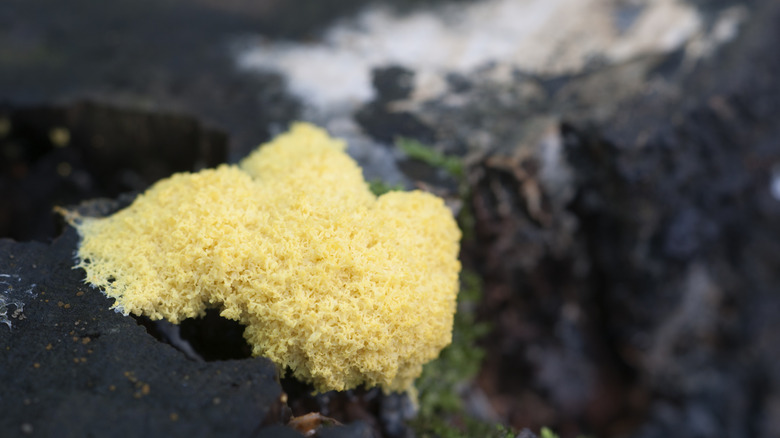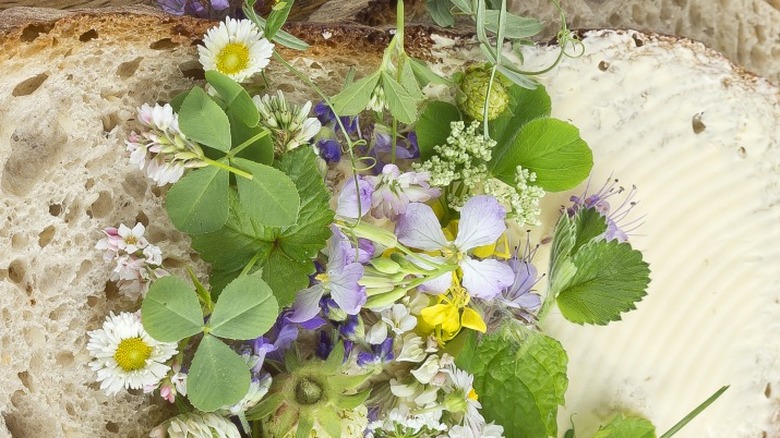Fairy Butter Is A Mystical Spread That's Actually A Mushroom
In 2022, butter boards took the internet by storm, enchanting people with their exquisite presentations. And while an artfully arranged plate of butter designed for communal dipping may seem like an invention of the TikTok generation, colonial Americans were crafting fairy butter long before the internet made it cool.
Created by combining hard-boiled egg yolks, sugar, flower water, and butter, fairy butter is a sweet compound butter commonly found in cookbooks dating from the middle of the 18th century. Comparable to buttercream, the slightly sweet and supremely floral concoction was enjoyed by the wealthiest and most well-connected settlers, as printed cookbooks were considered a luxury item — even for the rich.
Fairy butter wasn't just a treat for the tastebuds, but a feast for the eyes as well. It was served by straining the concoction through a fine mesh strainer, which created thin strands of butter that stood upright on the plate like tiny stalagmites, or better yet, like a number of fungi or (pardon the unappetizing name) slime molds that it's believed the fancy sweet butter might have been named after. To take this nature-inspired dish to the next level, you can even decorate the plate with fresh flowers and herbs before serving the whole ensemble with an array of slightly sweet baked goods like scones, toast, crumpets, gingerbread, or even pancakes.
How fairy butter got its name
To understand the origins of the culinary treat that is fairy butter, we must first understand the world in which it was created. In the 1700s, the belief that fairies were flitting about was alive and well, and proof of their existence could easily be found in undisturbed areas of nature. One such example was remnants of their legendary feasts: tiny bits of butter left behind on deadwood in the areas fairies were known to frequent.
In actuality, what was believed to be fairy butter — otherwise known as witch's butter or troll's butter — was some form of fungus or mold — there are a variety of contenders for the original inspiration. The presence of the fungus, with its buttery hue and gooey texture, was viewed as a sign that the ever-mischievous fairies were about, and precautions were often taken to protect nearby crops and food supplies. One of the most superstition-laden food processes was butter churning, with many believing that sprites and pixies could cause the butter to curdle or not to set at all. Some farmers would even go so far as to burn the fungus in an attempt to keep disruptive energies at bay.
While our ancestors may not have wanted fairies anywhere near their farms, they certainly had no problem trying to imitate their recipes. When you're looking to add a little whimsy to mealtime, there's no butter — excuse us — better way to do it than with a sweet plate of fairy butter inspired by our tiny, magical brethren.

